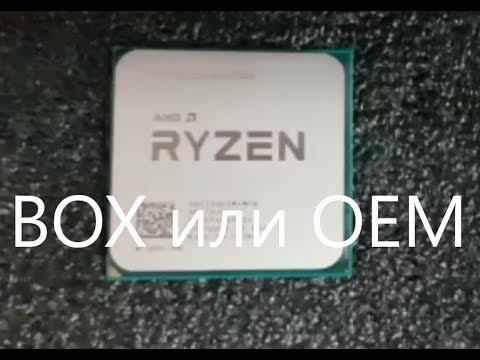Contents:


Though preserving LIFO will not fix supply chain issues on its own, eliminating it would make the problem worse. One main factor that determines whether a company chooses LIFO or FIFO is inventory turnover. Inventory turnover is the ratio of a business’s cost of goods sold to its average inventory on hand over a particular period. In practice, this is usually expressed annually, indicating the number of times inventory fully turns over in a year.
- An instance of this is when a company uses the LIFO reserve to submit earnings to tax services when the cost of production is constantly rising but uses LIFO internally to calculate budgets and higher margins.
- In reporting value of inventories for inventories valued on LIFO, use the value of the inventories before calculations to determine LIFO Value and LIFO Reserve.
- Discuss whether you agree or disagree with the disallowance of LIFO for valuing inventory.
- For 2016, the measure that will most likely be the same regardless of whether the company uses the LIFO or FIFO inventory method is the ______.
- We believe that sustainable investing is not just an important climate solution, but a smart way to invest.
The LIFO reserve is an account used to bridge the gap between FIFO and LIFO costs when a company is using FIFO but would like to report LIFO in its financial statements. As indicated above, the LIFO reserve is important for a company because it explains any differences between the LIFO and FIFO accounting methods. In other words, the LIFO reserve is critical because it ultimately offers the most accurate and most complete picture of a company’s inventory, sales, revenue, and profits. Given the above facts in an asset sale, a seller would net $1,464,000 after federal income taxes of $536,000.
LIFO reserve
However, LIFO comes closer in effect, although not in design, to deducting inventories when they are acquired, and thus reduces the tax penalty on inventory investment. LIFO Reserves calculation enables the company to comply with the accuracy and correctness of the information depicting the true picture of the company’s financial health, sales, taxes, costs, etc. From this example, we can see a big difference between the two types of inventory methods. The company will record this difference as a contra-inventory account. It indicates the difference between LIFO and FIFO inventory method reporting.
Veritiv Announces Record Second Quarter 2022 Net Income, EPS ... - PR Newswire
Veritiv Announces Record Second Quarter 2022 Net Income, EPS ....
Posted: Tue, 09 Aug 2022 07:00:00 GMT [source]
The LIFO reserve (an asset or contra-asset) represents the difference in cost of inventory under the FIFO and LIFO assumptions. The change in the balance in the LIFO reserve will also increase the current year's cost of goods sold. The difference between the cost of an inventory calculated under the FIFO and LIFO methods is called the LIFO reserve. LIFO reserve is created or raised by simply debiting cost of sales account and crediting a contra asset account that usually goes with the name LIFO Reserve or LIFO Allowance. From the above calculations you can clearly see that if company X will yield lower current ratio as compared to company Y as X’s inventory is based on LIFO.
What Are LIFO and FIFO?
However, repealing the provision would further penalize inventory investment and could make these problems worse. Full expensing for inventories would provide a further improvement to the status quo, though it would likely only have a marginal impact relative to other factors driving supply chain woes. To be fair, marginally improving the tax treatment of inventories would not suddenly make the U.S. economy invulnerable to major global supply shocks. Diversified supply chains, where firms have both domestic suppliers and a mix of foreign suppliers from several countries, have been more resilient than supply chains reliant on one major supplier . And some shocks are too big for marginally deeper inventories to prevent work stoppages. But maintaining LIFO would at least prevent further harm to supply chains.
The LIFO reserve may also increase over time as a result of the increasing difference between the older costs that are used to value inventory under LIFO and the more current costs that are used to value inventory under FIFO. Additionally, when the number of inventory units manufactured or purchased exceeds the number of units sold, the LIFO reserve may increase due to the addition of new LIFO layers. On the other hand, it evaluates inventory based on stock purchased earlier. Companies must bridge the gap between both accounts when reporting the value of those goods in the financial statements. So far, discussions have been based on the assumptions of rising prices and stable or growing inventory quantity.
Absorption Costing: Definition, Formula, Calculation, and Example
The LIFO effect is therefore $30,000, and the following entry is made at year-end. The difference between the inventory method used for internal reporting purposes and LIFO is referred to as the allowance to reduce inventory to LIFO or LIFO reserve. The change in the allowance from one period to the next is called the LIFO Effect. Are there any accounting principles that would dictate whether FIFO or weighted average costing methods should be used for product costing and inventory valuation? • To the extent the purchase price of the dealership goodwill relates to a multiple of earnings, does LIFO play a role? Yes, as any dealer who has been on LIFO knows, the deductions or income attributable to LIFO which are required to be reflected on the financial statements can dramatically affect the net profit of the dealership.
The invoice lists the variousitems, prices, and extensions of the goods in the car. You note that the carload was shipped December 24 from Albuquerque,f.o.b. Albuquerque, and that the total invoice price of the goods in the car was $35,300. The bookkeeper affirms the fact that this invoice is to be held for recording in January. “EisnerAmper” is the brand name under which EisnerAmper LLP and Eisner Advisory Group LLC provide professional services.
Cost of goods sold is defined as the direct costs attributable to the production of the goods sold in a company. Last in, first out is a method used to account for inventory that records the most recently produced items as sold first. The FIFO method of evaluating inventory is where the goods or services produced first are the goods or services sold first, or disposed of first. The LIFO method of evaluating inventory is when the goods or services produced last are the ones to be sold or disposed of first.

But repealing encumbrance accounting does not just tax accumulated LIFO reserves—it will change incentives for future inventory investments. This principle often comes into conflict with the economic principle of deducting costs when incurred, as inflation does not reduce the value of the deduction in real terms. For instance, the current ratio is the most used and popular ratio to assess a company’s liquidity.
Study notes from a previous year's CFA exam: 2. The LIFO method
For internal reports, which are viewed by shareholders that benefit from company profit, the FIFO method is typically used because it presents the actual or reasonably expected profit the company stands to generate. Borrower and its Subsidiaries are reporting the value of their inventory under the LIFO method for purposes of GAAP. LIFO Reservemeans the reserve for lifo inventory on the Borrowers consolidated financial statements recorded in accordance with Agreement Accounting Principles. Nevertheless, the purchase price of the stock will definitely be impacted by the LIFO reserves. In essence, the buyer is acquiring the future tax liability from the seller.
Seneca Foods Corporation: Undervalued But Weakening Financials - Seeking Alpha
Seneca Foods Corporation: Undervalued But Weakening Financials.
Posted: Tue, 29 Nov 2022 08:00:00 GMT [source]
The footnotes to 2007 financial statements contain the following. LIFO LiquidationLIFO liquidation is an event of selling old inventory stock by companies that follow the LIFO Inventory Costing Method. During such liquidation, the stocks valued at older costs are matched with the latest revenue after sales. Both the LIFO and FIFO methods fall in line with the Generally Accepted Accounting Principles established by the Financial Accounting Standards Board in the US. Most companies utilize both methods when preparing financial information. The goal is to make the presentation of inventory value as attractive as possible.
Understanding the LIFO Reserve
One of the most critical items in terms of total dollars is the consideration given to a dealership’s LIFO reserve. Alex Muresianu is a Policy Analyst at the Tax Foundation, focused on federal tax policy. Previously working on the federal team as an intern in the summer of 2018 and as a research assistant in summer 2020. He attended Tufts University, graduating with a degree in economics and minors in finance and political science.
- XYZ International Limited uses the FIFO method for internal reporting and the LIFO method for external reporting.
- The FIFO method bases its cost flow on the chronological order purchases are made, while the LIFO method bases it cost flow in a reverse chronological order.
- If this account balance changes, more costs will be assigned to cost of goods sold for the year causing reported profits to decrease.
- • No purchase considered for fixed assets, used vehicles or parts inventory.
- The invoice lists the variousitems, prices, and extensions of the goods in the car.
In this instance the actual tax liability on the LIFO reserve has been triggered in full. Using LIFO usually generates a larger deduction than FIFO, decreasing a company’s income tax. Figuring the LIFO reserve helps companies figure out how much larger that deduction was and just how much tax was deferred. LIFO treatment of inventories is not a solution to supply chain difficulties.
A declining reserve is an important indicator that can be used for analyzing the profitability of a company and its sustainability. This method is quite popular in the United States and is allowed under US GAAP . Companies opting for the LIFO method of Inventory are required to disclose Last in First Out Reserve in the footnotes of their financial statements. Financial Statements Of A CompanyFinancial statements are written reports prepared by a company's management to present the company's financial affairs over a given period . Under the right circumstances, using LIFO accounting can be a smart tax-saving move for dealerships.
Meanwhile, under the https://1investing.in/ inventory accounting method, it would deduct the cost of the last unit of inventory purchased, namely the unit purchased for $32 in November. Subtract $32 in costs from $40 in revenue, and the company has $8 in income. Most companies use the LIFO method for external reporting due to the tax savings and the non-LIFO method for internal reporting. As a result, a reserve of the difference between LIFO inventory cost and non-LIFO inventory cost.

What are the LIFO, FIFO, and Weighted Average inventory valuation methods? Unfortunately, if the corporate stock is sold, under certain circumstances IRC Section 382 can severely limit the availability of the pre-ownership change net operating loss to offset future income, including LIFO recapture. This is a particularly complex tax issue which should be explored by professional tax advisors on a case by case basis. Companies with very fast inventory turnover use LIFO less than companies with slower inventory turnover. For example, a store that exclusively sells perishable fresh produce must replace its inventory frequently over the course of a year. There may only be days between when the oldest and most recent units of inventory are acquired—likely meaning a minimal difference in price.

The allowance to reduce inventory to LIFO would be deducted from inventory to ensure that the inventory is stated on a LIFO basis at year-end. The use of a pure LIFO system is troublesome for interim periods, for which estimates must be made of years-end quantities and prices. You are asked to travel to Milwaukee to observe and verify the inventory of the Milwaukee branch of one of your clients. You arrive on Thursday, December 30, and find that the inventory procedures have justbeen started. You spot a railway car on the sidetrack at the unloading door and ask the warehouse superintendent, Buck Rogers,how he plans to inventory the contents of the car. He responds, “We are not going to include the contents in the inventory.” Later in the day, you ask the bookkeeper for the invoice on the carload and the related freight bill.
That’s why inventory turnover is often used as a measure of managerial efficiency. However, when supply chains break down, the relatively sparse inventory stock runs out quickly, leading to a freeze in business activity and lost revenue. As a recent Federal Reserve working paper found, just-in-time inventory practices raise firm value by 1.3 percent, while forcing a 15 percent larger reduction in output in response to a sudden supply shock. The income approach focuses on matching deductions for costs with the revenues they generate. For example, if a farm invests in a new tractor that it will use for 10 years, it should spread the deductions for that tractor out over the next 10 years. When applying this principle to inventories, companies should deduct the cost of a unit of inventory when it is sold.

